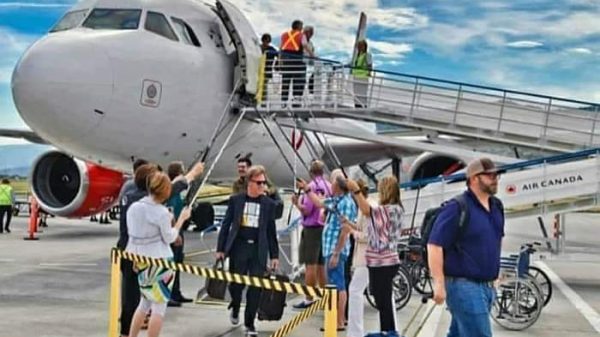SS2 Third Term Geography Past Questions And Answers
Here are 20 SS2 Third Term Geography Questions with options and answers:
Question: What is the term for the process by which rivers and streams carry away soil and rocks from one location to another?
a) Erosion
b) Weathering
c) Deposition
d) Sedimentation
Answer: a) Erosion
Question: The point on the Earth’s surface directly above the earthquake’s point of origin is called the:
a) Epicenter
b) Focus
c) Seismograph
d) Fault line
Answer: a) Epicenter
Question: What is the term for a deep, narrow valley with steep sides, often formed by the action of a river?
a) Canyon
b) Plateau
c) Delta
d) Estuary
Answer: a) Canyon
Question: The process of water vapor turning into liquid water is known as:
a) Condensation
b) Evaporation
c) Precipitation
d) Transpiration
Answer: a) Condensation
Question: Which layer of the Earth’s atmosphere is characterized by a decrease in temperature with altitude and contains the ozone layer?
a) Troposphere
b) Stratosphere
c) Mesosphere
d) Thermosphere
Answer: b) Stratosphere
Question: The line connecting points of equal atmospheric pressure on a map is called:
a) Isotherm
b) Isobar
c) Isohyet
d) Isohel
Answer: b) Isobar
Question: In which type of weathering, rocks are broken down into smaller pieces without changing their chemical composition?
a) Mechanical weathering
b) Chemical weathering
c) Biological weathering
d) Physical weathering
Answer: a) Mechanical weathering
Question: What is the term for a large, slow-moving mass of ice formed from the accumulation and compaction of snow over time?
a) Glacier
b) Iceberg
c) Ice cap
d) Ice shelf
Answer: a) Glacier
Question: Which layer of the atmosphere is closest to the Earth’s surface and is where weather events occur?
a) Exosphere
b) Thermosphere
c) Troposphere
d) Stratosphere
Answer: c) Troposphere
Question: What is the term for the process of transforming rocks through heat and pressure without melting them completely?
a) Melting
b) Erosion
c) Metamorphism
d) Deposition
Answer: c) Metamorphism
Question: The movement of air masses from regions of high pressure to low pressure is known as:
a) Conduction
b) Convection
c) Advection
d) Compression
Answer: c) Advection
Question: Which of the following is an example of a renewable energy source?
a) Coal
b) Natural gas
c) Solar power
d) Nuclear power
Answer: c) Solar power
Question: What is the term for the natural border formed by a river, mountain range, or other geographical feature?
a) Political boundary
b) Watershed
c) Topographic boundary
d) Physical boundary
Answer: d) Physical boundary
Question: The process of rocks and soil moving downslope due to the force of gravity is known as:
a) Erosion
b) Weathering
c) Mass wasting
d) Deposition
Answer: c) Mass wasting
Question: In which biome would you find permanently frozen ground known as permafrost?
a) Tundra
b) Rainforest
c) Savanna
d) Temperate forest
Answer: a) Tundra
Question: What is the term for the measure of the total economic value of all goods and services produced by a country in a given period?
a) GDP (Gross Domestic Product)
b) GNI (Gross National Income)
c) CPI (Consumer Price Index)
d) Inflation rate
Answer: a) GDP (Gross Domestic Product)
Question: The process of rocks and soil being deposited in a new location is known as:
a) Erosion
b) Weathering
c) Deposition
d) Sedimentation
Answer: c) Deposition
Question: What is the term for the sudden release of energy in the Earth’s crust that causes seismic waves?
a) Earthquake
b) Volcano
c) Tsunami
d) Landslide
Answer: a) Earthquake
Question: Which ocean current is responsible for the relatively mild climate along the western coasts of continents at high latitudes?
a) Labrador Current
b) Gulf Stream
c) California Current
d) Kuroshio Current
Answer: b) Gulf Stream
Question: The process of rocks and soil moving downhill due to the force of water is known as:
a) Erosion
b) Weathering
c) Mass wasting
d) Deposition
Answer: a) Erosion.




